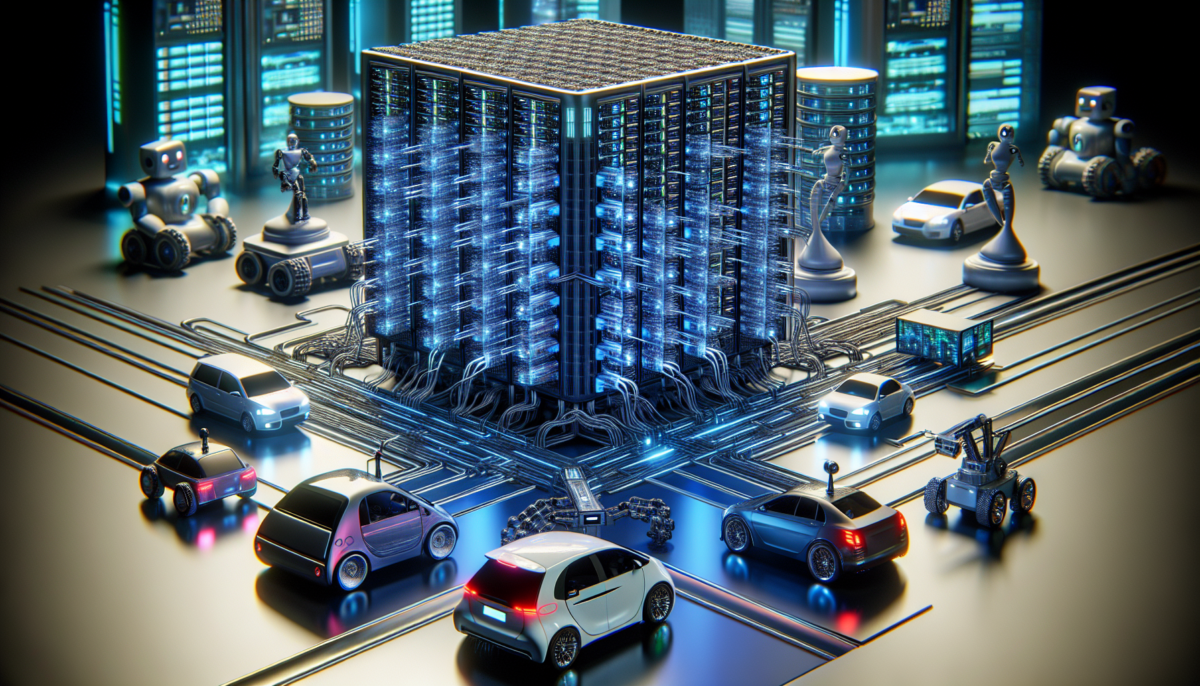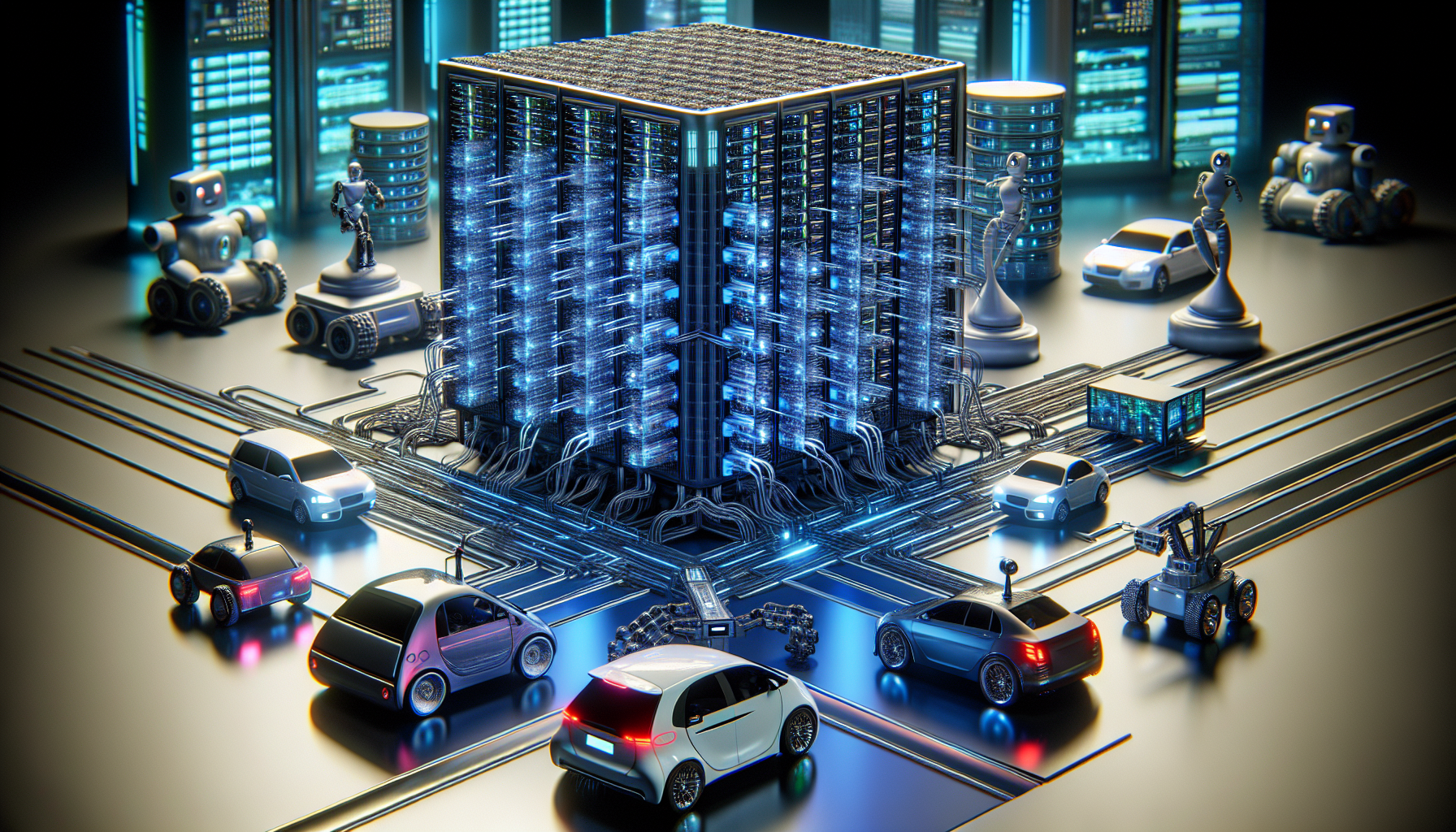“Introducing Tesla Cortex: The AI Supercluster Driving the Future of Self-Driving Vehicles and Robotics”
We independently review everything we recommend. When you buy through our links, we may earn a commission which is paid directly to our Australia-based writers, editors, and support staff. Thank you for your support!

Introducing Tesla Cortex: The AI Supercluster Shaping the Future of Self-Driving Cars and Robotics
Elon Musk, the CEO of Tesla, has shared a new video on social media showcasing a look inside the Gigafactory located in Austin, Texas. This footage provides a unique perspective on Tesla’s freshly enhanced AI data center, which is home to tens of thousands of advanced AI chips. These components are anticipated to position Tesla’s AI supercluster among the most substantial compute clusters globally, vital for the evolution of autonomous cars and robots.
Quick Overview:
- Tesla’s Gigafactory in Austin now features a large AI supercluster, which is expected to include between 85,000 and 100,000 H100 GPU equivalents by year-end.
- This AI cluster will drive Tesla’s “real-world AI” projects, such as self-driving technology and humanoid robots.
- Earlier this year, Musk diverted 12,000 Nvidia GPUs destined for Tesla to xAI, yet it appears Tesla’s infrastructure is primed for growth.
- The video shows initial construction stages with vacant cable trays and ongoing work.
- Tesla’s AI is heavily reliant on data-centric, end-to-end learning to cultivate driving behaviors that resemble human actions.
- Scalability and generalization remain vital priorities for Tesla’s AI, allowing adaptation to new and unencountered scenarios.
Exploring Tesla’s Gigafactory in Austin
The fresh video from Elon Musk taken at Tesla’s Gigafactory in Austin, Texas, has generated considerable excitement among technology aficionados and industry specialists. The clip displays the latest expansion on the factory’s southern side, where tens of thousands of high-performance AI chips are being added. This advancement aligns with Tesla’s overarching strategy to establish one of the most formidable AI superclusters worldwide, essential to the company’s vision for self-driving cars and robotics.
From GPUs to AI Superclusters
This year, Tesla gained attention when Musk allocated 12,000 Nvidia H100 GPUs that were meant for Tesla to his other project, xAI. This move sparked a conversation about resource management amidst Musk’s various companies. Yet now it appears that Tesla’s AI setup is progressing, with plans to amass between 85,000 and 100,000 H100 GPU equivalents by the close of 2024. This will involve a combination of Nvidia GPUs and Tesla’s unique Dojo chips, both crucial for AI training and execution.
Tesla’s Strategy for “Real-World AI”
Tesla often describes its AI initiatives as “real-world AI,” a phrase that highlights the practical uses of artificial intelligence in daily life. In contrast to traditional AI systems that lean heavily on simulations, Tesla’s approach is rooted in actual data. The firm gathers extensive data from its fleet of vehicles, utilizing it to train its AI models. This data-led method enables Tesla’s AI systems to learn not merely from preset rules but from real-world encounters, enhancing adaptability and scalability.
End-to-End Learning for Self-Driving Technology
A notable aspect of Tesla’s AI is its end-to-end learning framework. Conventional AI systems typically depend on pre-established rules for decision-making, whereas Tesla’s AI is designed to convert raw input—such as camera images—straight into driving actions. This method parallels the way a human learns to operate a vehicle, minimizing the reliance on human-defined regulations and enhancing the AI system’s flexibility and responsiveness. This end-to-end learning is paramount for Tesla’s goal of fully autonomous cars, which must navigate an endless array of real-world circumstances.
Scalability and Generalization
Another fundamental element of Tesla’s AI approach is its emphasis on scalability and generalization. While many AI technologies thrive in controlled settings, Tesla’s AI must be equipped to generalize its training data to address new and unexpected scenarios. This capacity to adapt is especially critical for autonomous vehicles, which face numerous unpredictable conditions on the streets. Tesla’s AI is structured to learn from each interaction, progressively enhancing its operation over time.
Video Insights: A Glimpse Inside Tesla’s AI Supercluster
Though videos revealing such infrastructure are uncommon, Musk’s latest post provides a notable insight into the preliminary phases of building Tesla’s AI supercluster. Here’s what we can deduce from the visuals:
Under Construction
The video clearly illustrates that the AI supercluster is still in the construction phase. The cable trays atop the server cabinets remain mostly empty, with safety bollards, ladders, and workers donning safety vests throughout the footage. This suggests that the installation process is still active, with key components still forthcoming.
Power Requirements for AI
The clip also emphasizes the considerable power infrastructure necessary to sustain such a vast compute cluster. While the server racks now display high-capacity power cables, it’s evident that the complete power needs haven’t yet been fulfilled. Once fully functional, the power consumption from this supercluster is anticipated to be substantial, potentially affecting the nearby power grid.
Rows of GPUs
The footage showcases countless rows of server cabinets laden with GPUs, extending into the horizon. Counting the aisles becomes challenging after the eighth row, but it’s apparent that this is an immense installation. The scale of the arrangement highlights the extensive computational power Tesla is amassing to propel its AI aspirations.
Hot and Cold Aisles
Modern data centers must meticulously regulate temperature, and Tesla’s facility is no different. The design incorporates cold aisles where the front of the server blades face inward, optimizing cooling efficiency. Hot air is expelled from the rear into hot aisles, where it is extracted from the system. The floor seems engineered to catch dust, with a positive pressure system likely employed to keep dust away from sensitive components.
High-Tech Meets Low-Tech
In spite of the state-of-the-art technology showcased, the video also presents some grassroots solutions. One aisle features a simple cardboard sign secured by duct tape—a delightful contrast to the high-tech surroundings. This serves as a reminder that even within the most advanced environments, sometimes the simplest solutions prevail.

Conclusion
The revelation of Tesla’s AI supercluster at their Gigafactory in Austin signifies a crucial achievement in the company’s quest for autonomous driving technology and robotics. Combining Nvidia H100 GPUs with Tesla’s proprietary Dojo chips, this supercluster is poised to emerge as one of the most substantial AI compute clusters in the…
